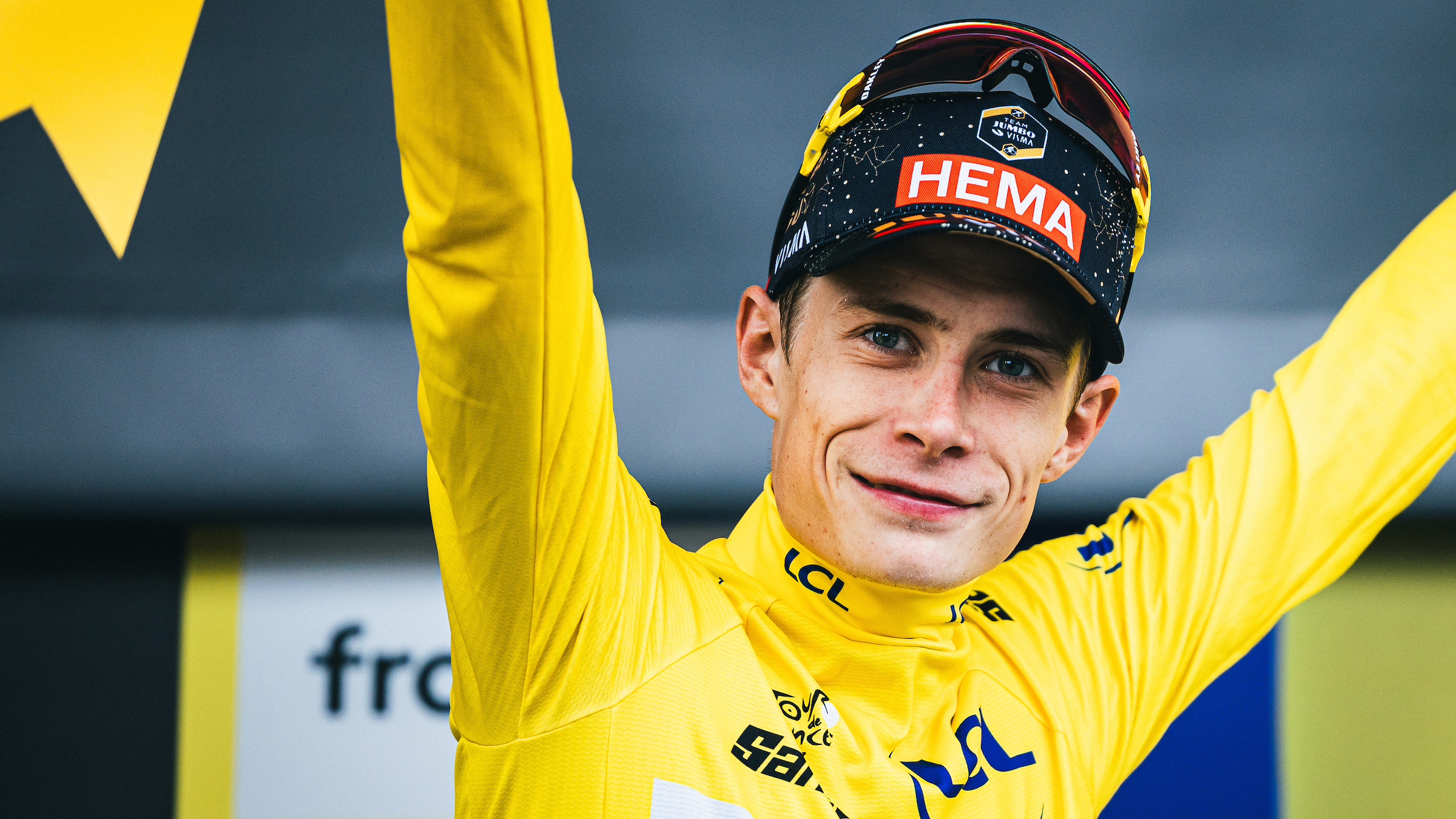
Jonas Vingegaard exhales deeply, puffing out both cheeks as he sits on a black plastic chair, with the world’s cycling media staring at him from under obscuring face masks.
A long-sleeved yellow jersey fits loosely around his stick-thin arms. The jersey has a high collar that is zipped from the back, almost all the way up, to the nape of his neck.
A modern-day golden fleece that Vingegaard began specifically preparing for in mid-April. It’s now late July.
He has been told there is a five-minute wait until the beginning of his press conference as winner of the 2023 Tour de France, held traditionally after the penultimate stage, so has taken a seat to the left of a podium reserved for formal proceedings.
He stares contemplatively at his hands that are loosely clasped in his lap as the clicks of raised smartphones and long lenses in a white marquee, which has served as the day’s press room for print media and now a bunch of TV crews that have arrived from a separate compound for broadcasters, reverberate.
Former Dutch pro turned TV pundit Tom Dumoulin stands out dressed in an all-cream ensemble, sat against one of the walls.
Vingegaard, who warmly greeted his ex-Jumbo-Visma teammate on the way in, eventually gets up and goes back to speak with him, killing time. Cameras follow.
The Dane knows the process. He won his first Tour title in only his second race appearance 12 months earlier, after placing runner-up to Tadej Pogačar (UAE Emirates) on his debut in 2021. And at the 110th edition, he’s spoken daily to press in attendance since assuming the maillot jaune from Jai Hindley (Bora-Hansgrohe) at the end of stage six in the Pyrenees.

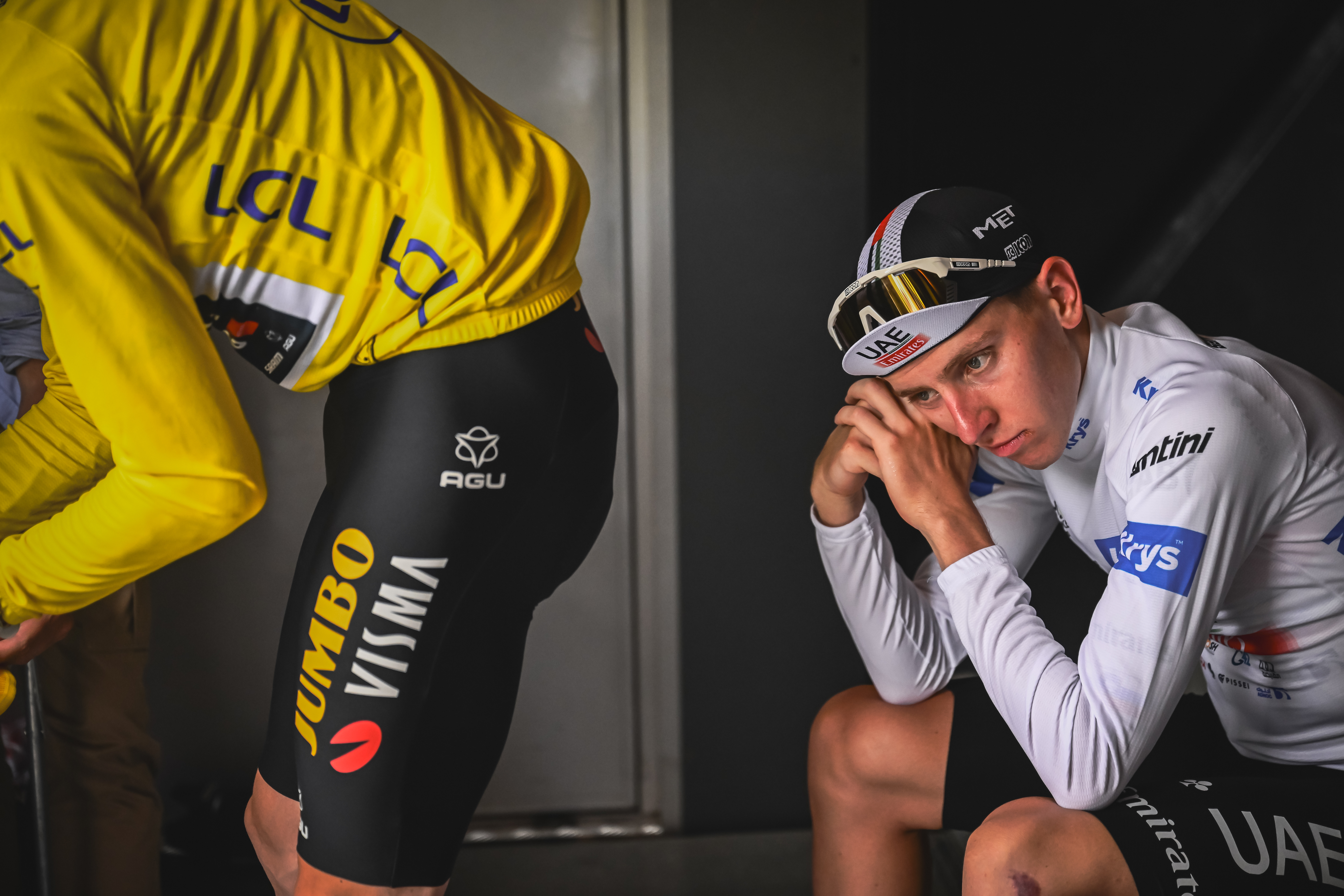
Following the time trial on stage 16, Vingegaard's victory seemed secured
In each of those daily encounters, Vingegaard gave little away. His answers to print press, which he faced after running the gauntlet with broadcast media, were usually one to two sentences maximum.
He didn’t treat the collective with contempt but wasn’t there to entertain or seek fame, validation or favour either. Vingegaard was all business. Not commercial business, but the business of winning cycling’s most renowned stage race. And you got the impression that he knew the longer he spent on the video link at the end of every stage talking about his day, rivals, chiefly Pogačar, doping, if the Tour would be won by seconds – popular sentiment he always refuted, saying, what proved rightly, that it would be decided by minutes – the less recovery time he got. On rest days, Jumbo-Visma didn’t hold open press conferences, with Vingegaard instead speaking to select broadcasters only. Whether that was his directive or the team’s directive was unclear. Some riders thrive on media attention, while for others public sentiment can sow destructive seeds of doubt.
It wasn’t until the end of the penultimate stage in the Vosges, inside the press marquee by the finish line, that Vingegaard, who Jumbo-Visma once coined “the little guy”, seemed to exhale literally and figuratively. As much as you could in a room packed with journalists, anyway.
As he took his place on the podium, front and centre of the marquee, the 26-year-old briefly fidgeted with a gold wedding band on his finger but was more conversational than he’d been at any point in the yellow jersey the two weeks prior.
What he had achieved was still sinking in, even if it had been definitively decided days before, with Vingegaard’s time trial victory and a strong showing on the queen stage to Courchevel where archrival Pogačar declared “I’m gone. I’m dead”.
When Cyclingnews asks what was physically and mentally more stressful – winning his first Tour title, or successfully defending his second, Vingegaard exhales again.
“I think I need some time before I can answer that,” he says.
“It depends on how I get out of the Tour. I think to feel that you need to go one week after the Tour and see how you feel. Last year I still felt quite good after one week. It is mentally hard of course but I think I need some time to answer that.”
Vingegaard finished the Tour the next day seven minutes and 29 seconds ahead of Pogačar on general classification and 10:56 clear of the Slovenian’s teammate, Adam Yates, who rounded out the podium.
Pogačar stubbornly refused to accept that Vingegaard and his Jumbo-Visma team had cracked him. “I cracked myself,” he said.
Their respectful rivalry is perhaps one reason why Vingegaard’s victory hasn’t yet been fashioned as the beginning of a new era at the Tour for him and Jumbo-Visma, which has won two of the sport’s three Grand Tours this season and will gun for a third starting later this month.
Teammate Sepp Kuss was practical when it came to talking about legacy during the race.
“You never know,” he said. “Every year there is so many new talents. There’s also a bunch of young guys and you always have to stay on top of your game.
“There’s Remco [Evenepoel], [Juan] Ayuso, all these young riders that are still improving but I think that’s even better for Jonas. Having a rival like Pogačar brings him up another level and we’ll see that in every year; there will always be a really strong rival and that’s the nice thing about the Tour.”
Jumbo-Visma is also forging its own path at the race and hasn’t ruled out the possibility of Primož Roglič returning in future editions despite Vingegaard’s now indelible mark on it.

Roglič may return to the Tour de France in 2024
“There’s a possibility he will come back,” says coach Arthur van Dongen.
“We work always the same. In October, after the last race, all trainers, all coaches, all performance staff they come together. We have goals from this year, we make an evaluation from all the goals and then we start to make the plans for next year.
“It depends on what will be the parcour next year in the Tour. What are the goals from the guys in the team? And then we make a total plan.
“It’s possible that Primož will do next year maybe Tour/Vuelta combination or Jonas will maybe make a different step but that’s open for the future. Always possible.”
The first thing Vingegaard wanted to do upon returning to Denmark was eat a durum. He could have set the bar a little higher if video of the homecoming he received there is anything to go on. What looked like hundreds of thousands of people turned up to one public reception, with Vingegaard, back in yellow, taking in the incredible scene from the vantage point of a balcony where he waved to the masses with one arm like royalty, whilst holding his young daughter in the other. Maybe he got tips from the Crown Prince of Denmark, who called Vingegaard during the Tour to congratulate him.
It wasn’t discussed in the marquee back in France but there would be a limit to the durums he could eat after the Tour and the time he would have to consider the toll of the race before his next objective only weeks later: the Vuelta a España.
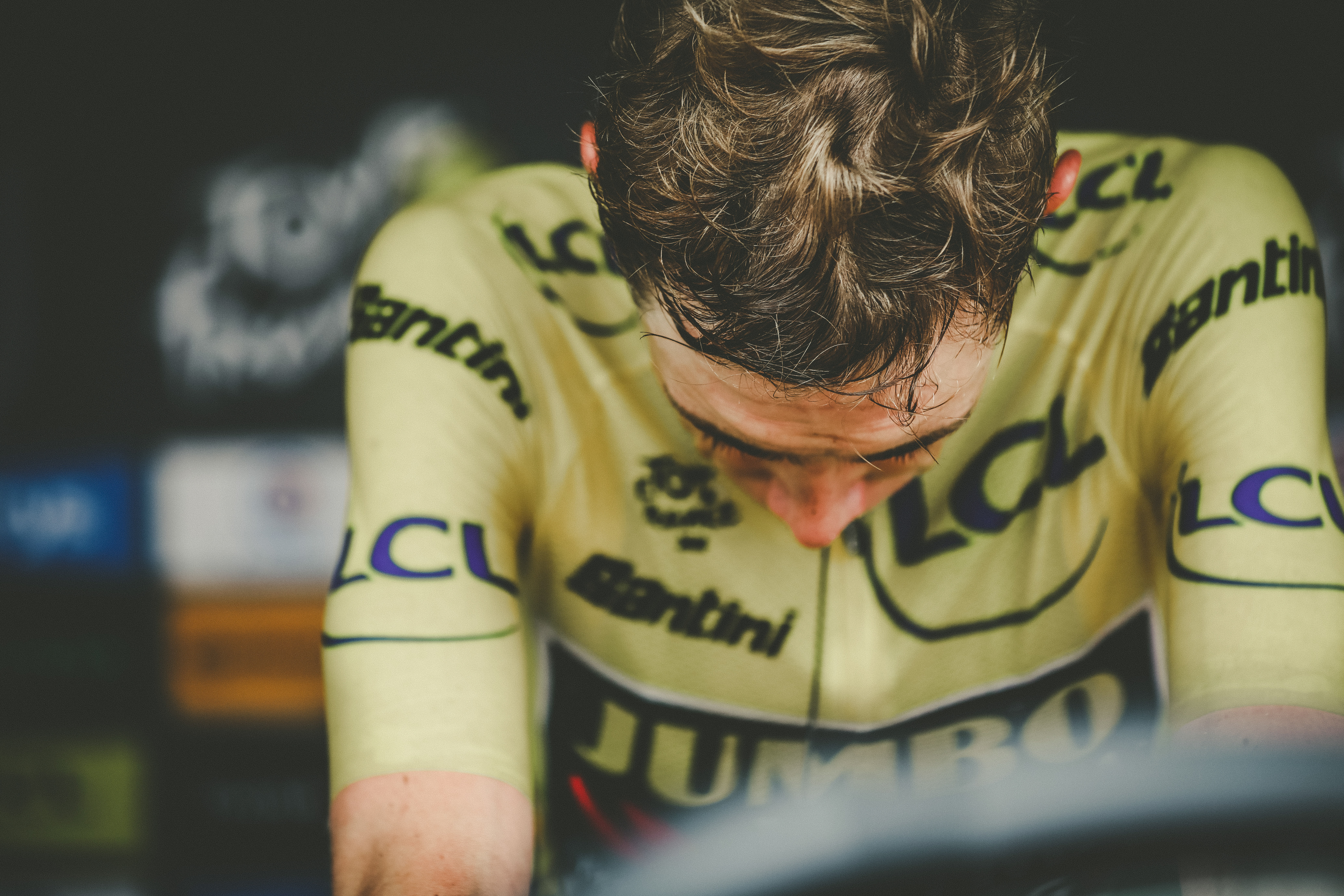
Jumbo-Visma trainer Tim Heemskerk is doing analysis from the Tour when he answers the phone in early August.
“It’s kind of a performance analysis,” he says. “Was the weight good? Did it stay consistently? Is there anything else you see when you look at data that is areas for improvement but also areas [that] went really well, and I must say everybody was on a really high level.”
Heemskerk, who has worked with Vingegaard since the pair both joined the team in 2019, has just returned from an altitude training camp in Tignes with the bulk of the Vuelta squad, including the reigning Giro d’Italia champion Roglič.
Vingegaard is set to meet them at the Vuelta.
“It's basically a description also for other race coaches to see,” Heemskerk continues.
“You could see it was a really tough Tour de France. You could see after two-and-a-half weeks that everybody was tired, and you see that in power numbers also.”
Looking at Vingegaard’s numbers, Heemskerk concludes he was at his best.
“It depends on what areas you look at; I’ve seen that in the beginning of this season when we talk about Gran Camiño or Basque Tour you see power values that are similar than in the Tour but then on the long climbs, which you do not have in those races, really long climbs, you see that he was at his best level.
“The time trial was at his best level,” Heemskerk continues.
“You can tell he also became a better rider again.
“Last year I said yeah, he can still be a bit better, and I think that paid off. The decisions we made during this season, they pay off, and all the evaluations we did after the [2022] season, where you go, okay, these are areas for improvement, it looks like it was better.”
Among those decisions was having less interruptions in the build-up. So, no classics, which meant less travel and reduced the risk of getting sick.
“You’re more in one place, being a bit more relaxed, being there with your family and knowing Jonas so well now that, yeah, that helps,” he says.
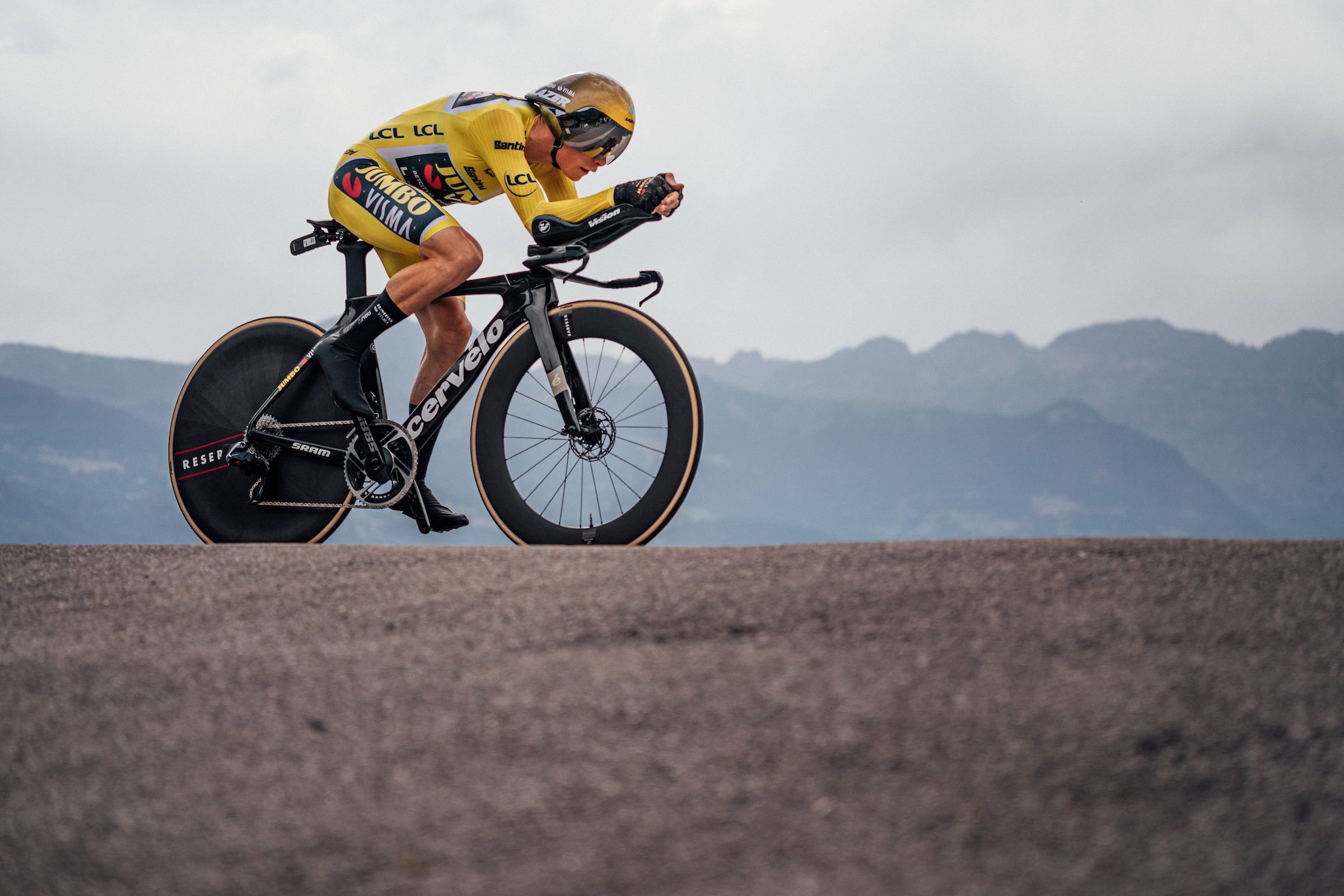
“The time trial was at his best level" says trainer Tim Heemskerk
Heemskerk comes from an MTB and cyclo-cross background and when he first started working with Vingegaard, he had trouble picking him out at team gatherings.
“Basically, when we had our introduction, I got a paper with names written on it and there was Jonas Vingegaard. I had no clue who he was,” he says.
“I remember sometimes in camps you have a little bit of a view when you have dinner and you really have to look, ‘Oh yes, Jonas is there,’ but now he’s leading it, now it’s not looking any more for Jonas. If he’s there, he can stand up and talk to the group. He’s there, he’s visible. He grew from the little guy into a leader.”
Heemskerk puts that transformation partly down to the environment at Jumbo-Visma and its roster, including Roglič and Wout van Aert, among others. What the first season of a Netflix series on the Tour painted as internal team rivalry among headline acts, which surely exists, Heemskerk sees as success breeding success.
“He learnt a lot from Primož, from Wout, from the other leaders in the team. But that’s also talent, when you learn fast and see how much of a change that is, like a metamorphosis. It’s really nice to see, going from the quiet guy to the leader,” he says.
Vingegaard could be forgiven for by and large calling an end to his season after the Tour. Just turn the food app that guides the team’s riders on what to eat, how much and when during races off, and have a beer or five.
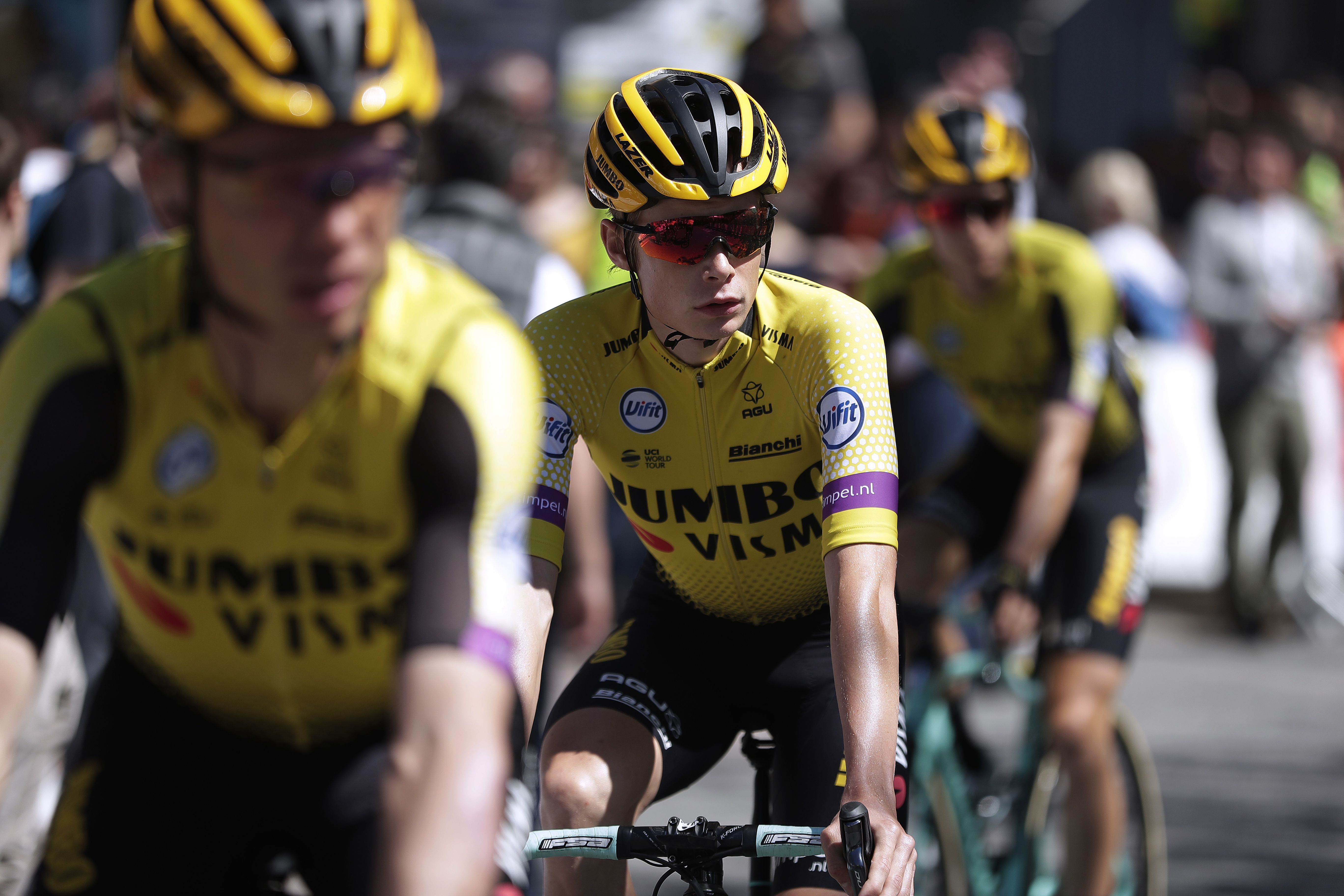
Jonas Vingegaard in his first season with Jumbo-Visma
After his title triumph last year, Vingegaard had a break from competition for almost two months and returned only twice afterwards at Cro Race, where he was second, and Il Lombardia, in which he placed 16th.
But he’s taken a different approach this year, announcing toward the end of the Tour that he would line up at the Vuelta with Roglič.
“Prior to the Tour he said, ‘If I come out of the Tour really good and I feel good this is something that’s on my mind.’ So, it’s been on his mind but for the coaches it’s always a question mark,” Heemskerk says. “It can go either way. You win it and you’re tired and you go it’s okay, I’ve won the Tour, I’ll do a couple more races, finish the season, or it’s like you don’t win the Tour and you’re disappointed and you’re also not going.”
Heemskerk, before this year’s Tour was over, was already preparing notes for Vingegaard on the Vuelta, and how to recover from a yellow jersey win and simultaneously prepare for the Vuelta - within a month.
“After the Tour he had a lot of attention, a lot of celebrations, he had to visit a lot of partners, so you know, okay, this is a period where after those days, when things calm down, he needs some good rest,” he continues.
“That last weekend when it looked like he was going to win the Tour, unless he crashed, then I was already making a document to put in TrainingPeaks with some reminders what to do, and that includes power naps, good food. It’s difficult to do that when you have the celebrations. As soon as it calms down and he is at home then there is things he can control again and relax and be there with the family.”
Heemskerk isn’t concerned that the rockstar receptions Vingegaard has undergone since becoming a two-time Tour winner will change his resolve either. He is set to train largely at home, where he can also recharge with his daughter and wife, Trine, 35, before travelling with them for a short stint at altitude.
“He’s there with the family and his partner, if he drinks too many beers probably Trine will tell him!” Heemskerk quips.
Compliance, he adds on a serious note, has been one of his main takeaways from working with Vingegaard.
“I think that’s a very big strength of the past five years, Jonas is a rider who really follows the training and has full trust in what I plan,” he says.
“So, I try to challenge him sometimes and more and more you get to a situation where you go, ‘Okay, what do you think?’ In the beginning he’s learning, and he tries to soak it up, but he has also been a rider who when there is a recovery ride planned, he does the recovery ride, when it’s a five-hour ride planned he does the five hours and the intervals planned. So basically, it’s like the first few years a perfect experiment because if things go well, you know why because the compliance has been very high. And if it’s sometimes not so good you also know why.
“It's very nice to work in a way like that where he has full trust in what you do. He’s never adding hours, or extra intervals or things like that where you go, ‘That could have interfered with performance – it could make it better, it could make it worse.’
“Every time I know exactly what’s been going on.”

“He learnt a lot from Primož, from Wout, from the other leaders in the team" says Heemskerk
What would constitute success at the Vuelta for Vingegaard remains to be seen.
His preparation for it will be starkly different to that of the Tour.
“We only have three weeks. It’s not like preparation for the Tour, which started mid-April and you have 10 weeks to prepare,” says Heemskerk. “This is something where we go okay, you’re really fit but there is also some fatigue. When you rest you will lose some fitness, but then when the Vuelta starts, I really hope he is really fit and has a high readiness and is fresh to start it.”
Heemskerk and other trainers were at altitude camps with Vingegaard in December, January and February. His run into the Tour was near flawless, with victory at O Gran Camiño, third at Paris-Nice, and then title honours at both Basque Country and the Critérium du Dauphiné.
“The most difficult period for me as a trainer, and you probably don’t think like that, but it’s the period between Dauphiné and the start of the Tour. For me that was the more difficult period,” Heemskerk says.
“You win the Dauphiné, you kind of dominate it, he was attacking and by himself basically on the last climbs where he wanted to attack, and then you go, okay, are we ahead of schedule, on schedule, what do we need to do those next two weeks?”
Roglič has undergone the full Jumbo-Visma treatment, if you will, for the Vuelta, with altitude training camps and specific preparation races. On the day of Vingegaard’s dominant time trial victory at the Tour, Roglič posted a selfie on Instagram from the Tignes camp.
“Kuku. Guess the col,” read the caption.
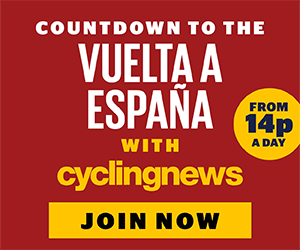
Heemskerk in the first week of August has been in touch with Vingegaard almost every day, talking about recovery, readiness and planning acrocordingly.
“Of course, the Tour is our most important goal. He achieved it, and now we try to win the Vuelta. But it depends now every day. When you’ve been at such a high peak, feeling so strong and racing at your highest level ever, then it’s also really important to I always say de-train the body first a little bit, relax, let the body recover and adapt but that’s quite difficult because we’ve never done this before with Jonas so I cannot predict how good it will be,” Heemskerk says.
“I’ve tried to plan it now, as of this week, normal and then I really, really look at the data when it’s coming in, in the afternoon, to maybe adjust the plan for tomorrow again.”
Vingegaard needed time to evaluate but was the bigger task: a first, or second Tour title.
Heemskerk believes mentally that the two-champion is in a good place ahead of what will be his career second Vuelta appearance, having made his debut supporting Roglič to a title win in 2020. That year Vingegaard placed 46th – the only time he hasn’t finished a Grand Tour on the podium.
“If you win the Tour for the first time you get all these new experiences, which probably take some energy, and then you do the second time and you already know this is something you did before so you kind of have a better feeling of what’s coming,” Heemskerk says.
“I think that would help a lot mentally also. I think now after this Tour he’s mentally in a really good place because he’s experienced [it all] already last year and if last year it caused fatigue now it probably caused less fatigue.
“I think that’s how it goes with experience and that is important I think for people like Jonas, [who are] maybe a little bit more on the introvert side in general life, being more the quiet type, because that is a way for them to recharge batteries; be there with your family and recharge and that’s what he is doing at the moment.
“And how it will be in the Vuelta, I don’t know. I do my best and everybody [in] the team is doing their best, and then we’ll see. That’s the same approach as going to the Tour. We do our best. And we cannot control the outcome.”

What’s in a Cyclingnews subscription? We use our subscription fees to be able to keep producing all our usual great content as well as more premium pieces like this one. Find out more here.







